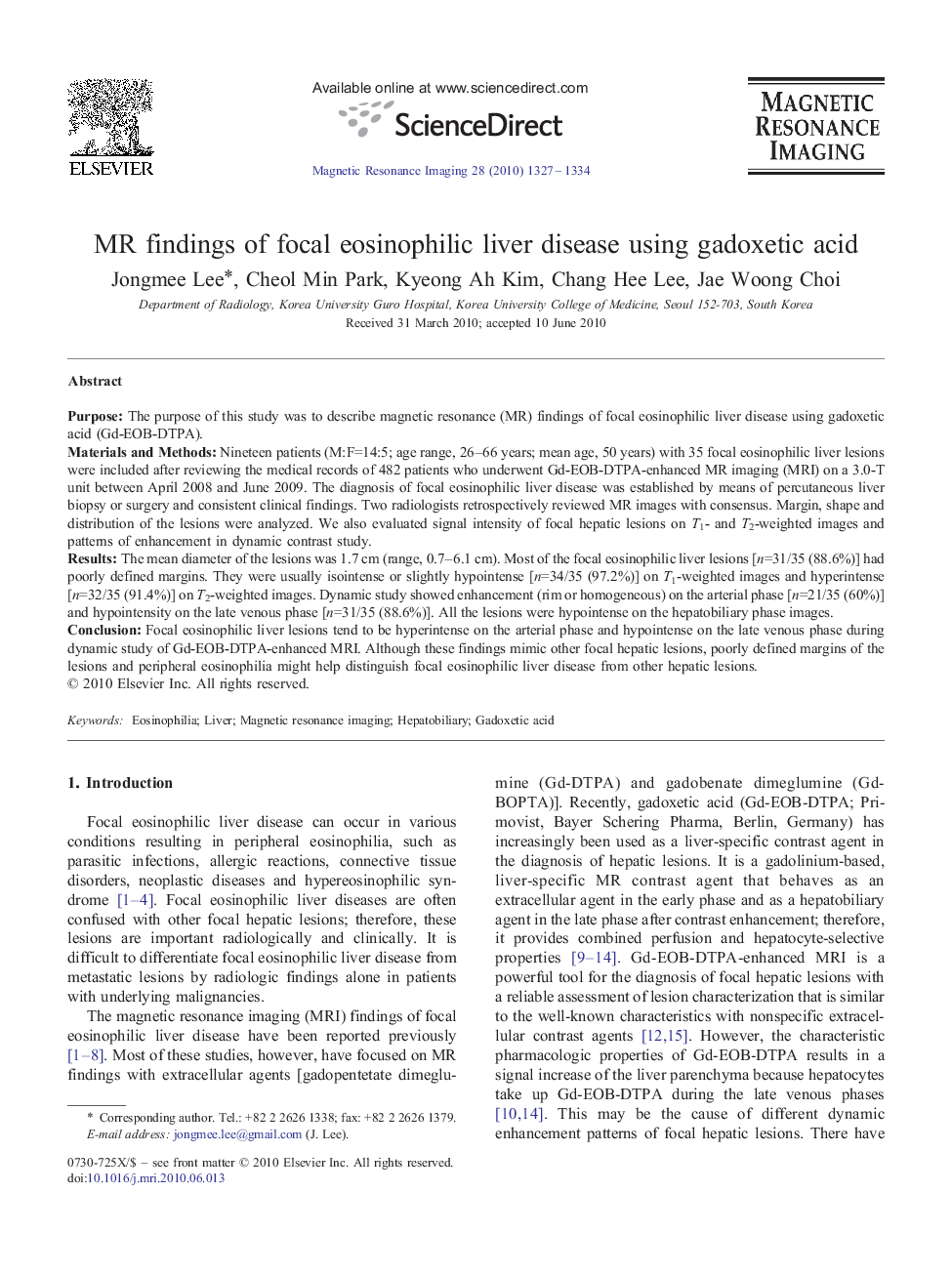| Article ID | Journal | Published Year | Pages | File Type |
|---|---|---|---|---|
| 1807000 | Magnetic Resonance Imaging | 2010 | 8 Pages |
PurposeThe purpose of this study was to describe magnetic resonance (MR) findings of focal eosinophilic liver disease using gadoxetic acid (Gd-EOB-DTPA).Materials and MethodsNineteen patients (M:F=14:5; age range, 26–66 years; mean age, 50 years) with 35 focal eosinophilic liver lesions were included after reviewing the medical records of 482 patients who underwent Gd-EOB-DTPA-enhanced MR imaging (MRI) on a 3.0-T unit between April 2008 and June 2009. The diagnosis of focal eosinophilic liver disease was established by means of percutaneous liver biopsy or surgery and consistent clinical findings. Two radiologists retrospectively reviewed MR images with consensus. Margin, shape and distribution of the lesions were analyzed. We also evaluated signal intensity of focal hepatic lesions on T1- and T2-weighted images and patterns of enhancement in dynamic contrast study.ResultsThe mean diameter of the lesions was 1.7 cm (range, 0.7–6.1 cm). Most of the focal eosinophilic liver lesions [n=31/35 (88.6%)] had poorly defined margins. They were usually isointense or slightly hypointense [n=34/35 (97.2%)] on T1-weighted images and hyperintense [n=32/35 (91.4%)] on T2-weighted images. Dynamic study showed enhancement (rim or homogeneous) on the arterial phase [n=21/35 (60%)] and hypointensity on the late venous phase [n=31/35 (88.6%)]. All the lesions were hypointense on the hepatobiliary phase images.ConclusionFocal eosinophilic liver lesions tend to be hyperintense on the arterial phase and hypointense on the late venous phase during dynamic study of Gd-EOB-DTPA-enhanced MRI. Although these findings mimic other focal hepatic lesions, poorly defined margins of the lesions and peripheral eosinophilia might help distinguish focal eosinophilic liver disease from other hepatic lesions.
